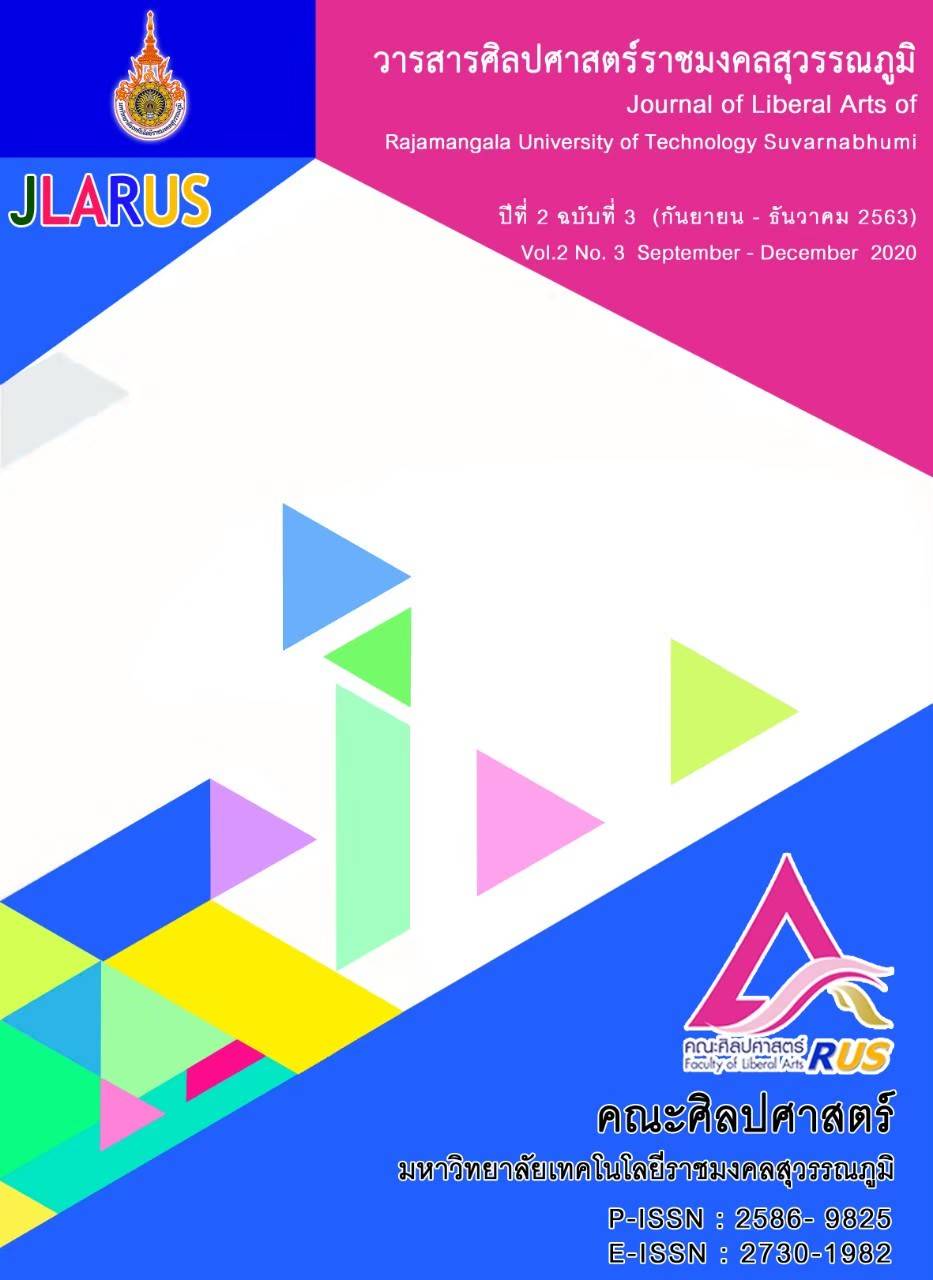AN ANALYSIS OF AMBIGUITY AND VAGUENESS IN ENGLISH JOKES ON SOCIAL MEDIA
Main Article Content
Abstract
The objectives of this research are to analyze language patterns in English jokes found on social media and to compare the patterns in which English jokes are used the most. The researchers collected jokes data from social media such as Facebook, Instagram, and Twitter, selecting the 1,000 jokes with more than 10,000 likes, 1,000 shares or 1,000 comments from 16–22 December 2019 by using the concept of vagueness and ambiguity to analyze the data. The research results found that 48% of English language jokes were generated from vague language, 46% are generated by ambiguous language, and 6% from other forms of language.
Article Details
How to Cite
Khamlue, P., & Sathientharadol, P. . (2020). AN ANALYSIS OF AMBIGUITY AND VAGUENESS IN ENGLISH JOKES ON SOCIAL MEDIA. Journal of Liberal Art of Rajamangala University of Technology Suvarnabhumi, 2(3), 491–500. retrieved from https://so03.tci-thaijo.org/index.php/art/article/view/248771
Issue
Section
Research Articles
References
Chatvikanet, R. (2010). Potentiality of Gags and Humour in Television Programmes. Master of Communication Arts thesis, Chulalongkorn University.
Dynel, M. (2009). Beyond a Joke: Types of Conversational Humour. Language and Linguistics. 3(5), 1284–1299.
Friedrich, G. (2017). On the Difference between Ambiguity, Vagueness, and Indeterm inacy. Retrieved December 20, 2019 from https://www.researchgate.net/ publication/316993788_On_the_Difference_Between_Ambiguity_Vagueness_and_Indeterminacy/link/5bb344aa92851ca9ed33fd81/download.
Jaroenkiatboworn, K. (2005). A Discourse Analysis of Jokes in Thai. Ph.d. in Linguisitcs dissertation, Chulalongkorn University.
Kadłub, M. (2017). Sources of Ambiguity in Language. Studia Anglica Resoviensia. 14. 44-57.
Kempson, R. (1999). Semantics Theory (digital printing). Cambridge: The press syndicate of the University of Cambridge.
Lutfi, A. (2019). A Semantic Pragmatic Study of English Jokes. Al-Adab Journal, 1(116), 1- 16. Retrieved November 7, 2020 from https://doi.org/10.31973/aj.v1i116.472.
Mina, P. (2018). The Strategies of Creating Humor in Thai Television Programs. Veridian E-Journal, Silpakorn University. 11(3), 2003-2013.
Pawestri, N. & Wongwattana, U. (2018). Ambiguity in Indonesian Jokes on the Instragram “Dagelan”. Journal of Physics: Conference Series 1028. 1-6.
Plawong, P. (2004). Introduction to Semantics. Bangkok: Ramkhamhaeng University.
Seewoester, S. (2009). Linguistics Ambiguity in Language-based Jokes. Master of Communication thesis, DePaul University.
Taghiyev, I. (2017). English Linguistic Jokes Under the Umbrella of Semiotics. Retrieved November 7, 2020 from https://www.researchgate.net/publication/325248642 _English_Linguistic_Jokes_Under_the_Umbrella_of_Semiotics.
Thongprasit, P. (2012). A Study of Language Usage and Thai Humor Techniques in Situation Comedy. Master of Arts in Thai language thesis, Kasetsart University.
Dynel, M. (2009). Beyond a Joke: Types of Conversational Humour. Language and Linguistics. 3(5), 1284–1299.
Friedrich, G. (2017). On the Difference between Ambiguity, Vagueness, and Indeterm inacy. Retrieved December 20, 2019 from https://www.researchgate.net/ publication/316993788_On_the_Difference_Between_Ambiguity_Vagueness_and_Indeterminacy/link/5bb344aa92851ca9ed33fd81/download.
Jaroenkiatboworn, K. (2005). A Discourse Analysis of Jokes in Thai. Ph.d. in Linguisitcs dissertation, Chulalongkorn University.
Kadłub, M. (2017). Sources of Ambiguity in Language. Studia Anglica Resoviensia. 14. 44-57.
Kempson, R. (1999). Semantics Theory (digital printing). Cambridge: The press syndicate of the University of Cambridge.
Lutfi, A. (2019). A Semantic Pragmatic Study of English Jokes. Al-Adab Journal, 1(116), 1- 16. Retrieved November 7, 2020 from https://doi.org/10.31973/aj.v1i116.472.
Mina, P. (2018). The Strategies of Creating Humor in Thai Television Programs. Veridian E-Journal, Silpakorn University. 11(3), 2003-2013.
Pawestri, N. & Wongwattana, U. (2018). Ambiguity in Indonesian Jokes on the Instragram “Dagelan”. Journal of Physics: Conference Series 1028. 1-6.
Plawong, P. (2004). Introduction to Semantics. Bangkok: Ramkhamhaeng University.
Seewoester, S. (2009). Linguistics Ambiguity in Language-based Jokes. Master of Communication thesis, DePaul University.
Taghiyev, I. (2017). English Linguistic Jokes Under the Umbrella of Semiotics. Retrieved November 7, 2020 from https://www.researchgate.net/publication/325248642 _English_Linguistic_Jokes_Under_the_Umbrella_of_Semiotics.
Thongprasit, P. (2012). A Study of Language Usage and Thai Humor Techniques in Situation Comedy. Master of Arts in Thai language thesis, Kasetsart University.


